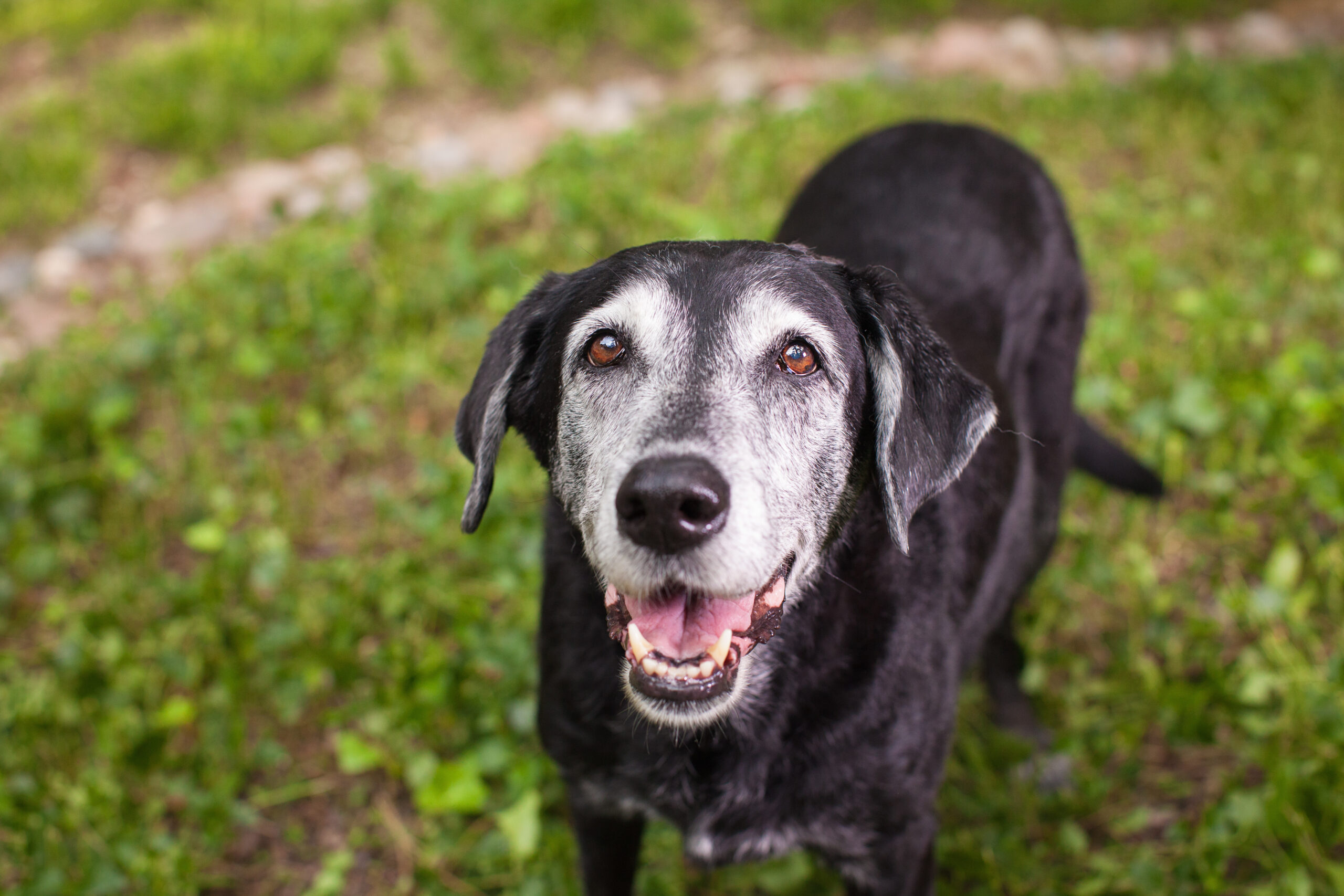
Let’s take a look at some considerations you should keep in mind – and draw to the attention of your clients — when working with senior dogs.
Numbers aren’t the whole story
You can remind clients that each specific dog is a unique being with varying needs. Rather than focusing on the specific number of years the dog has lived, consider where they are in terms of life stage. Eight years of living can look very different on a Bernese Mountain Dog compared to a Chihuahua, for example. Larger breeds tend to age more quickly than smaller breeds, and individual dogs reach their own developmental milestones at different times.
Health issues
One of the most important considerations when training senior dogs is their health. Older dogs can have arthritis, vision or hearing impairments, and other medical conditions that affect their ability to learn and participate in training. Before beginning any training program, it is essential that a veterinarian examines the dog to make sure they are physically able to participate. Also, it’s important to select training activities that are appropriate for the dog’s age and health status. Activities that require sitting on cue, for example, may be difficult for older dogs with hip issues or arthritis. For them, teaching the “stand” cue could be a great alternative.
Learning and positive reinforcement
It’s essential to have patience when training senior dogs and to use positive reinforcement techniques that reinforce desired behavior and keep their stress and anxiety at a minimum. Training is about joy, especially in your dog’s golden years. Offering treats, praise, and a comfortable environment will help an older dog relax and enjoy these activities.
Changing physical needs
Even without a clear diagnosis, older dogs may have pain in their spine or hips, making certain activities more difficult. They may also become less reliable with toileting–perhaps they need to go more often, have less control, or simply can’t get outside in time because they can no longer manage slippery floor surfaces or get up and down easily.
In all cases, patience, supervision, and making accommodations go a long way. When any dog that was previously housetrained begins losing bladder control, a veterinarian should always be consulted to check for any underlying health issues.
Remind your clients how helpful it is to feed their older dog on a set schedule and give plenty of opportunities to go outdoors. If a senior dog does have an accident, the client should gently interrupt the behavior (but not punish) and immediately take the dog outside, then reward and praise for toileting outdoors.
Combat cognitive decline
As dogs age, their brains may experience cognitive decline, which can disrupt learning ability and memory. Dogs with dementia can become confused and disoriented, perhaps bumping into objects or forgetting familiar locations. We want to be helpful and patient with them, as with any loved one suffering from such a condition. Fortunately, research suggests that learning and novelty can help combat cognitive changes.
Helping older dogs with cognitive decline can mean focusing on enrichment in interactions and training and avoiding drilling and repeating. Since short term memory suffers in normal canine aging, being repetitive may not strengthen behaviors but might instead frustrate both guardian and dog. It’s also important to provide a calm and structured environment for training sessions to reduce stress and anxiety.
Social needs
Senior dogs generally have different socialization needs than younger dogs. They may have less energy or interest in interacting with other dogs or people. It’s essential to introduce older dogs to new situations and new people slowly and in a positive and controlled environment. Trainers should be aware of the dog’s body language and signals to ensure they are comfortable and not overwhelmed.
Adapt methods
Senior dogs may require modifications to training methods to accommodate their physical limitations. For example, if a dog has arthritis or other mobility issues, it may be necessary to modify training that involves jumping or running. You may also consider using equipment like specialized harnesses or ramps to make daily activities easier and more comfortable for older dogs.
With patience, positive reinforcement, and modifications to training methods, older dogs can absolutely continue to learn and participate in training activities. Ongoing positive training with play, praise, and rewards, along with engaging enrichment, can help improve their quality of life by maintaining physical and cognitive functions. It also strengthens the bond between the dog and their guardian through all the years of their lives together.
Share senior dog success stories with us!
How have your clients improved the lives of older dogs or helped them overcome obstacles? Visit the Victoria Stilwell Academy on Facebook and let us know.



